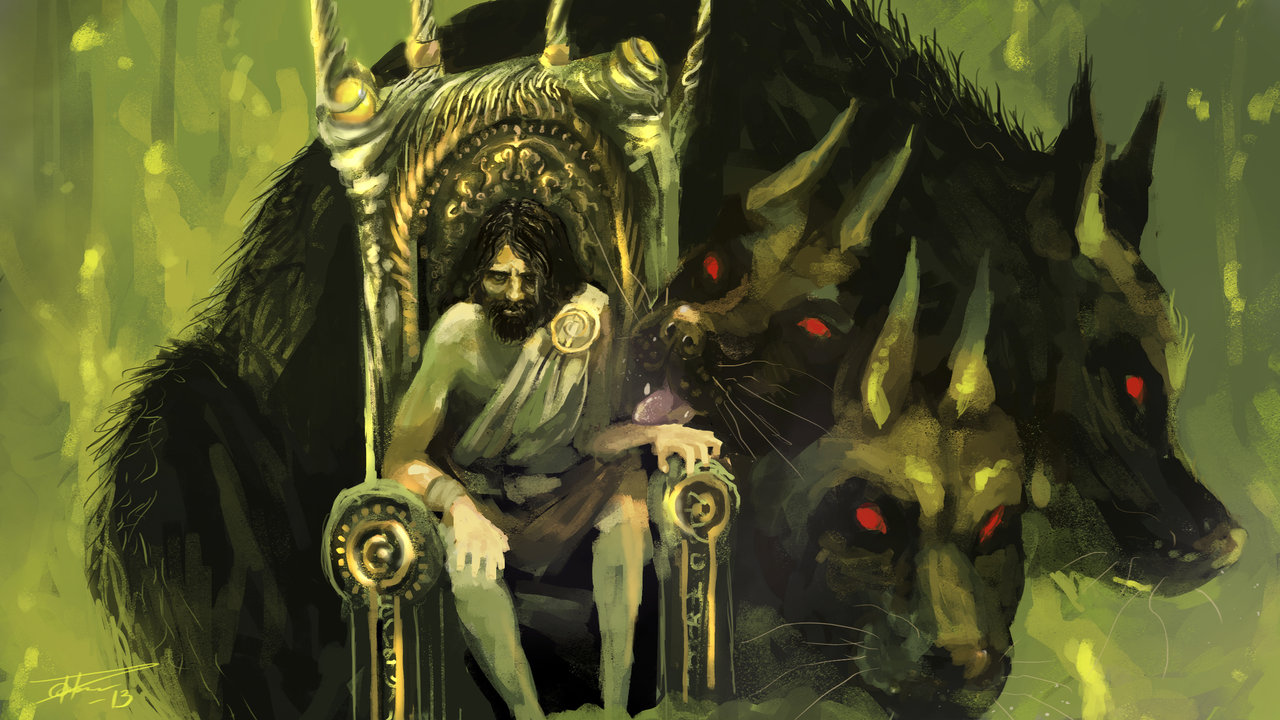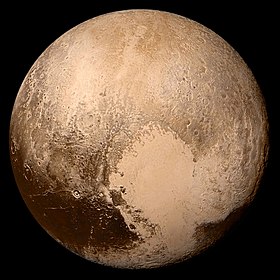Analysis of "This is PR: The Realities of Public Relations" (part 1)
Introduction
As always I want to thank you, the loyal reader for dropping by to check out my blog. If you are one of the loyal few you know I just completed an in-depth analysis of Persuasion in the Media Age by Timothy A. Borchers. I had a lot of fun doing it and I hope you enjoyed reading it. So in the spirit of keeping this money-machine rolling, I wanted to write about another topic near and dear to my heart, and that is public relations. So to achieve this aim, I shall now begin an in-depth analysis of a book I enjoy very much entitled This is PR: The Realities of Public Relations which is written by Doug Newsome, Judy VanSlyke Turk and Dean Krukeberg.
 | ||||||||||||||||||||||||||||||||||||||||||||||||||||||||||||||||||||||||||||||||||||||||||||||||||||
Pluto
Pluto was the first Kuiper belt object to be discovered. It is the largest and second-most-massive known dwarf planet in the Solar System and the ninth-largest and tenth-most-massive known object directly orbiting the Sun. It is the largest known trans-Neptunian object by volume but is less massive than Eris, a dwarf planet in the scattered disc. Like other Kuiper belt objects, Pluto is primarily made of ice and rock and is relatively small—about one-sixth the mass of theMoon and one-third its volume. It has a moderately eccentric and inclined orbit during which it ranges from 30 to 49 astronomical units or AU (4.4–7.4 billion km) from the Sun. This means that Pluto periodically comes closer to the Sun than Neptune, but a stable orbital resonance with Neptune prevents them from colliding. Light from the Sun takes about 5.5 hours to reach Pluto at its average distance (39.5 AU).
Pluto was discovered by Clyde Tombaugh in 1930, and was originally considered the ninth planet from the Sun. After 1992, its planethood was questioned following the discovery of several objects of similar size in the Kuiper belt. In 2005, Eris, which is 27% more massive than Pluto, was discovered, which led the International Astronomical Union (IAU) to define the term "planet" formally for the first time the following year. This definition excluded Pluto and reclassified it as a member of the new "dwarf planet" category.
Pluto has five known moons: Charon (the largest, with a diameter just over half that of Pluto), Styx, Nix, Kerberos, and Hydra. Pluto and Charon are sometimes considered a binary system because the barycenter of their orbits does not lie within either body.The IAU has not formalized a definition for binary dwarf planets, and Charon is officially classified as amoon of Pluto.
Meanwhile: Back on Earth
The Job of the PR Practitioner
Although the basic duties of a public relations practitioner have not changed much over the last several decades, the demands on the practitioner and the way the practitioner carries out his or her duties have changed and will continue to change. There is more call for depth and diversity in knowledge for this field now that it is functioning at a global level. There is less tolerance for hype. Practitioners need more command of a greater array of communication technologies, and media relations. Other skills include thinking (first and foremost), writing of all kinds, speaking, being persuasive, understanding and appreciating media, knowing graphics and photography, respecting deadlines and developing an ability to deal with and solve multiple PR problems at one time. Three Basic Roles The way a PR practitioner applies his or her special skills depends on the role he or she plays in an organization. The three main roles are those of staff member, an agency employee and an independent PR practitioner, who might from time to time function as a PR counselor. Staff Members Staff public relations practitioners are employees of commercial or non-profit organizations or of divisions of government such as local, state and federal agencies. They perform highly specialized tasks in their organizations but they get a paycheck just like other employees, and they share the same corporate or institutional identity. Specific needs of the organization usually determine the staff member's job description. Staff positions with small organizations will often include responsibility for external relations. In the case of a small nonprofit organization, the PR person typically works either with volunteers who provide professional expertise of various kinds or with outside suppliers whose services may be bought on a limited basis or donated. Staff positions with larger organizations can involve responsibilities for all other communications functions that report to public relations. Large organizations are likely to buy services such as research, audiovisuals (everything from employee training videos to video news releases and commercials) and perhaps even the annual report from outside suppliers. Outsourcing of special public relations services is increasing as companies cut back on their total number of in-house employees. HistoryDiscovery
In the 1840s, Urbain Le Verrier used Newtonian mechanics to predict the position of the then-undiscovered planet Neptune after analysing perturbations in the orbit of Uranus. Subsequent observations of Neptune in the late 19th century led astronomers to speculate that Uranus's orbit was being disturbed by another planet besides Neptune.
In 1906, Percival Lowell—a wealthy Bostonian who had founded the Lowell Observatory in Flagstaff, Arizona, in 1894—started an extensive project in search of a possible ninth planet, which he termed "Planet X". By 1909, Lowell and William H. Pickering had suggested several possible celestial coordinates for such a planet. Lowell and his observatory conducted his search until his death in 1916, but to no avail. Unknown to Lowell, his surveys had captured two faint images of Pluto on March 19 and April 7, 1915, but they were not recognized for what they were. There are fourteen other known prediscovery observations, with the oldest made by the Yerkes Observatory on August 20, 1909.
Percival's widow, Constance Lowell, entered into a ten-year legal battle with the Lowell Observatory over her late husband's legacy, and the search for Planet X did not resume until 1929. Vesto Melvin Slipher, the observatory director, summarily handed the job of locating Planet X to 23-year-old Clyde Tombaugh, who had just arrived at the Lowell Observatory after Slipher had been impressed by a sample of his astronomical drawings.
-------------------------------------------------------------------------------------------------
Commercial and Nonprofit Organizations Public relations people in organizations, whether commercial or nonprofit, may have skilled jobs in a PR department.They may be middle-managers of specialized PR activity, such as community relations or employee relations or may function as general professional staff.. Increased use of computer technology is likely to decrease the number of practitioners working at the lower-level jobs and increase the number working at the middle and senior managerial levels.
Government Job descriptions for PR positions in government vary dramatically. Some people who are called "public information officers" are really publicists whereas others with precisely the same title may have all the responsibiities of a corporare vice president for PR. Firm/Agency Employees Each agency or firm has its own internal structure, but generally, the president of the firm shares in handling accounts as do the salespeople who also may be account executives. A firm may employ a bookkeeper, a secretary, a publicity writer, an advertising or graphics specialist and an artist. In some instances, the writer may prepare both publicity and advertising copy and the artist may be responsible for illustrations and layout. Large firms have copy editors, media specialists, several artists and a production facility. Most firms, even the largest ones arrange contracts with printers, typesetters and photographers. Desktop publishing makes the jobs of writers and artists more efficient and easier to coordinate. Computer software programs that include type and graphics make almost instantaneous page makeup possible in-house. These systems usually make the writer the production person as well, since the writer actually develops the final format of publication. The artist provides original designs and artwork.
Independent Practitioners/Contractors The independent public relations practitioner is usually hired to accomplish a specific task, one that is ordinarily but not always predetermined. Payment may take the form of a flat fee, a fee plus expenses or a base fee plus hourly charges and expenses. The less experienced the PR practitioner is, the more often he or she will have to work for a flat fee.
Although some experienced independents prefer to bill for actual costs, they price a job based on the hours to complete it multiplied by an hourly rate. They often increase these costs by a certain percentage to cover overhead and profit. Independent public relations professionals sometimes function as public relations counselors. Some independent practitioners work almost exclusively as counselors.
A PR counselor is called in at an advisory level and works for a consultant's fee, which he or she sets, with hours and expenses added. The counselor studies and researches, interviews the people involved, outlines recommendations and makes a formal presentation of these. The program is then implemented by other PR workers at the organization or at an agency. Counselors may work independently or they may be associated with a firm as senior members. Some independent PR practitioners do various PR jobs, but most are strictly counselors.
Some counselors are sensitive about their role because people tend to view them as behind the scenes influence peddlers. Another misconception is that counselors are simply unemployed would-be staffers. Public confusion is understandable, because counselors are advisers who possess special areas of expertise, most of it gained in agency or corporate work. Their value resides in their experience, in the people they know and are able to call upon and in their skill as researchers, analyzers, communicators and persuaders.
Some counselors develop reputations for helping institutions prepare for and handle crisis communications. Others are known for their ability to help institutions establish and maintain good government relations (at all levels but primarily the federal level). Still others are called on for their ability to help with internal problems, typically involving employee relations. Counselors as senior practitioners often develop staffs that include younger people who have particular strengths or specializations.
End | ||||||||||||||||||||||||||||||||||||||||||||||||||||||||||||||||||||||||||||||||||||||||||||||||||||





No comments:
Post a Comment